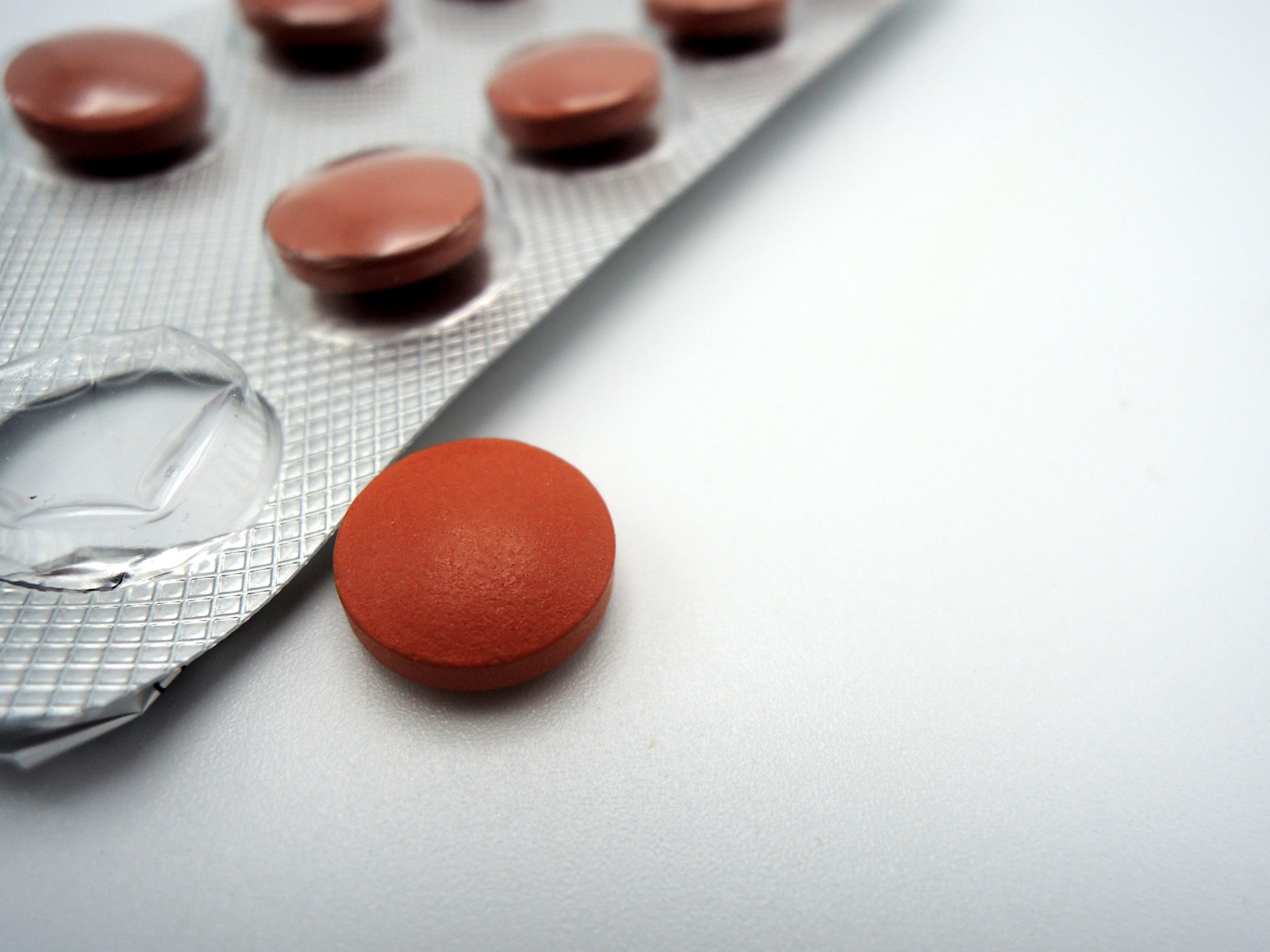

The combination product, Vyxeos® (daunorubicin and cytarabine), is now listed on the Pharmaceutical Benefits Scheme (PBS). It is indicated for the treatment of acute myeloid leukaemia (AML), specifically newly diagnosed therapy-related AML and AML with myelodysplasia-related changes.
Vyxeos® is a liposomal formulation containing daunorubicin and cytarabine in a 1:5 molar ratio. This formulation provides an extended duration of effect compared to conventional daunorubicin and cytarabine. In a Phase 3 study, Vyxeos® was associated with improved clinical outcomes. The median overall survival was 9.56 months for Vyxeos® compared to 5.95 months for conventional therapy, and the overall remission rate was 47.7% compared to 33.3%. The incidence and severity of adverse effects were similar for each group.
Vyxeos® should be used with caution in patients with Wilson’s disease or other disorders of copper metabolism. Copper gluconate is added to this formulation to ensure stable encapsulation of daunorubicin within the liposome. The International Council for Harmonisation of Technical Requirements of Pharmaceuticals for Human Use (ICH) recommends a permitted daily exposure (PDE) of 340 micrograms for parenterally administered copper. While each Vyxeos® vial contains 14mg of elemental copper, the number of lifetime doses is limited and pharmacokinetic data indicates that the copper is released slowly from the liposomes. Therapy should be discontinued in patients who exhibit signs or symptoms of acute copper toxicity.
Vyxeos® is not interchangeable with other daunorubicin and cytarabine products. The product information should be consulted for the recommended dosing schedule.


Anifrolumab has recently been added to the Pharmaceutical Benefits Scheme (PBS) for the treatment of systemic lupus erythematosus (SLE). To be eligible for PBS subsidy, patients must be receiving hydroxychloroquine, an immunosuppressant, and a corticosteroid unless contraindicated or intolerant.
Anifrolumab is a monoclonal antibody that binds with high affinity and specificity to the type I interferon receptor (IFNAR1). This inhibits type I interferon signalling, thereby blocking its biological activity. While SLE is complex and associated with many immunologic abnormalities, upregulation of type I interferon is thought to be a major pathogenic factor. In the phase 3 TULIP trials, anifrolumab was associated with improved overall disease severity, reduced glucocorticoid use, and a greater improvement in the severity of skin disease compared to placebo.
Anifrolumab is administered intravenously, typically as a 30-minute infusion every four weeks. The infusion rate may be reduced if infusion-related reactions occur. These reactions are typically mild or moderate in intensity and may include headache, nausea, vomiting, fatigue, or dizziness. In the case of a serious infusion-related or hypersensitivity reaction, immediate interruption of the infusion is required. Other potential adverse reactions include an increased risk of respiratory infections and herpes zoster. Treatment should not be initiated in patients with active infection, and caution is required in patients with chronic infection, recurrent infection, or known risk factors for infection.


A novel therapy for the treatment of acne vulgaris is now available. Clascoterone is a topical androgen receptor inhibitor indicated for use in people aged 12 years and older.
Androgens stimulate sebum production and play an important role in the pathogenesis of acne. Systemic antiandrogen therapies such as spironolactone and cyproterone have been successfully used in the management of acne. However, these medications can only be used for the treatment of acne in females.
Topical clascoterone has limited systemic antiandrogenic effects and can be used by males and females. The safety and efficacy of clascoterone were demonstrated in two Phase 3 trials. Clascoterone cream was significantly more effective than the vehicle cream, with 18.4% and 20.3% of patients in the active groups achieving treatment success at week 12, compared to 9.0% and 6.5% in the respective placebo groups.
Clascoterone cream is recommended to be applied twice a day as a thin uniform layer to clean dry skin. Studies demonstrate that the safety profile of clascoterone cream is similar to that of the vehicle, and adverse effects are infrequent and mild in nature. Long-term studies have not found any systemic antiandrogenic effects in males. However, to minimise systemic absorption, occlusive dressings should not be applied to the treated area.


Secukinumab is now available on the Pharmaceutical Benefits Scheme (PBS) for the treatment of moderate to severe hidradenitis suppurativa. Hidradenitis suppurativa is a chronic inflammatory condition of the skin characterised by painful nodules, abscesses, and scarring.
Secukinumab is a monoclonal antibody that binds and neutralises the pro-inflammatory cytokine, interleukin 17A (IL-17A). While IL-17A plays an important role in neutrophil activation, it also contributes to the pathogenesis of hidradenitis suppurativa.
The SUNSHINE and SUNRISE trials investigated the efficacy of secukinumab in the treatment of hidradenitis suppurativa. The primary endpoint in each study was the proportion of patients with a reduction of at least 50% in the abscess and inflammatory nodule count with no increase in abscesses or draining fistulae. In patients receiving secukinumab every two weeks, the primary endpoint was reached by 45% of patients in the SUNSHINE trial and 42.3% of patients in the SUNRISE trial, compared to 33.7% and 31.2% of patients in the respective placebo groups. The onset of action was as early as two weeks, with efficacy increasing to week 16 and sustained over the 52-week trial period.
Secukinumab is administered as a subcutaneous injection. Maintenance doses for hidradenitis suppurativa are normally given every four weeks, although some patients may benefit from dosing every two weeks. Secukinumab is also PBS listed for plaque psoriasis, psoriatic arthritis, and axial spondyloarthritis.


The Therapeutic Goods Administration (TGA) has issued a safety update for selective serotonin reuptake inhibitors (SSRIs) and serotonin and noradrenaline reuptake inhibitors (SNRIs). The product information for these medicines previously contained warnings of the potential for sexual dysfunction. These documents will now consistently advise that these adverse effects can persist after patients stop treatment.
Medicines affected by this issue are:
- SSRIs – citalopram, escitalopram, fluoxetine, fluvoxamine, paroxetine, sertraline; and
- SNRIs – desvenlafaxine, duloxetine, and venlafaxine.
Sexual dysfunction associated with SSRIs and SNRIs may include reduced libido, erectile dysfunction, ejaculation disorder, priapism, genital numbness, and dyspareunia. It is estimated that these effects resolve with continued use of the medication in up to 10% of patients. However, for some patients, these effects may persist for weeks or even years after discontinuing therapy.
The term post-SSRI sexual dysfunction (PSSD) was formally described in 2006. The prevalence of this condition is unknown, and symptoms are likely to be underreported. It is known that many patients are hesitant to discuss sexual issues with their prescriber. One study demonstrated that 14% of individuals spontaneously reported sexual dysfunction, while 58% reported sexual dysfunction when directly asked. As sexual adverse effects can have a negative impact on patient compliance and treatment prognosis, it is important for healthcare professionals to be proactive in this area.
The TGA encourages reporting of all suspected adverse effects.


Tafamidis is now available on the Pharmaceutical Benefits Scheme (PBS) for the treatment of wild-type or hereditary transthyretin amyloid cardiomyopathy (ATTR-CM). This condition is associated with the accumulation of misfolded transthyretin in the myocardium, which can lead to cardiomyopathy and heart failure.
Tafamidis selectively binds to thyroxine-binding sites on transthyretin. This stabilises the transthyretin tetramer and prevents it from dissociating into unstable monomers, the rate-limiting step in amyloid formation. While no studies have been conducted to determine its direct effect on cardiac amyloid deposition, tafamidis demonstrates improved survival in patients with ATTR-CM. Compared to placebo, tafamidis is also associated with a reduced risk of cardiovascular-related hospitalisation and an attenuated decline in left ventricular systolic and diastolic function.
Treatment-emergent adverse events reported in trials include asthenia, balance disorder, sinusitis, and cataracts. Reduced serum concentrations of total thyroxine are commonly seen, although this is not accompanied by clinical signs of thyroid dysfunction. This may occur due to tafamidis displacing thyroxine from transthyretin, which normally functions as a carrier protein for thyroxine.
Tafamidis is usually administered once a day, and the capsules may be taken with or without food. Tafamidis does not significantly affect the cytochrome P450 system but does inhibit the efflux transporter, breast cancer-resistant protein (BCRP). Tafamidis may increase systemic exposure to medicines that are substrates of BCRP (e.g. methotrexate, rosuvastatin, imatinib). Patients should be monitored for potential substrate-related toxicities, and dose modification of the interacting medicine may be required.


Mavacamten is now available on the Pharmaceutical Benefits Scheme (PBS) to treat symptomatic obstructive hypertrophic cardiomyopathy. Mavacamten is a novel drug that acts as a selective and reversible inhibitor of cardiac myosin. It reduces the probability of myosin being in the active state, thereby decreasing cardiac hypercontractility and its associated adverse effects.
The pivotal EXPLORER-HCM study investigated the efficacy of mavacamten in patients with obstructive hypertrophic cardiomyopathy. This randomised, placebo-controlled trial found that mavacamten improved exercise capacity, left ventricular outflow tract (LVOT) obstruction, New York Heart Association (NYHA) functional class, and health status.
The recommended starting dose is 5mg daily, with careful dose titration required according to the LVOT gradient. Mavacamten treatment should not be initiated in patients with a left ventricular ejection fraction (LVEF) <55%, and treatment should be interrupted if the LVEF is <50% at any clinical visit.
The primary method of clearance from the plasma is hepatic metabolism, which leads to some clinically significant drug interactions. Mavacamten is contraindicated with moderate to strong CYP2C19 inhibitors (e.g. fluoxetine), strong CYP3A4 inhibitors (e.g. itraconazole), and moderate to strong inducers of CYP2C19 or CYP3A4 (e.g. rifampicin).


The neurokinin-3 receptor antagonist, fezolinetant, is now available for the treatment of moderate to severe vasomotor symptoms (VMS) associated with menopause. This is the first non-hormonal medication approved for this indication.
The physiology of VMS is not fully understood. However, signalling via the kisspeptin/neurokinin B/dynorphin (KNDy) neurons is thought to be involved. These neurons innervate the thermoregulatory centre of the hypothalamus and are normally inhibited by estrogen and stimulated by neurokinin B. As estrogen levels decline during menopause, neurokinin B signalling increases activity at the thermoregulatory centre, which can lead to VMS. Fezolinetant blocks neurokinin B signalling, thereby normalising KNDy neuronal activity and reducing VMS.
The SKYLIGHT 2 trial investigated the efficacy of fezolinetant in reducing the frequency and severity of VMS. At week 12, the mean change in VMS frequency was -51.60% for fezolinetant 30mg, 55.16% for fezolinetant 45mg, and -33.60% for placebo. The reduction in VMS frequency compared to placebo was statistically significant in both fezolinetant dose groups at all time points between weeks 1 and 12. While there are currently no head-to-head studies comparing fezolinetant with estrogen, a recent meta-analysis suggests that its efficacy may be similar to that of hormonal therapies and greater than that of available non-hormonal therapies.
Fezolinetant is supplied as an oral tablet for daily administration. Serious treatment-emergent adverse effects were infrequently reported in clinical trials. Some elevations in liver enzymes occurred. These were generally asymptomatic and returned to baseline with continuing treatment or discontinuation. Fezolinetant is a substrate of CYP1A2, and the concomitant use of moderate or strong CYP1A2 inducers is contraindicated.
Fezolinetant may be an appropriate alternative for the treatment of VMS in women who cannot take hormonal therapies or for whom estrogen therapies are not effective.


Inclisiran was recently added to the Pharmaceutical Benefits Scheme (PBS) as a third-line option for non-familial hypercholesterolaemia and familial heterozygous hypercholesterolaemia.
Inclisiran is a first-in-class therapy known as a small interfering ribonucleic acid (siRNA). This medication reduces hepatic production of proprotein convertase subtilisin/kexin type 9 (PCSK9), an enzyme involved in LDL receptor regulation. The reduced level of circulating PCSK9 leads to increased LDL receptor recycling and expression on the surface of hepatocytes, increasing the uptake of LDL. Studies demonstrate that inclisiran lowers LDL levels by around 50% compared to placebo.
A potential advantage of inclisiran is the favourable dosing schedule. The first two doses are given three months apart, and maintenance doses are every six months. This may be particularly advantageous for patients with poor adherence to regular therapy. Inclisiran is administered as a subcutaneous injection, with each dose intended to be given by a healthcare professional. Inclisiran appears to be well-tolerated, with clinical trials generally reporting similar adverse events between placebo and inclisiran groups. The exception was injection site reactions, which occurred in 8.2% of inclisiran-treated patients and 1.8% of the placebo group in pivotal trials.


The Pharmaceutical Benefits Scheme (PBS) listing for dapagliflozin has recently been expanded. It is now subsidised for the treatment of heart failure independent of left ventricular ejection fraction (LVEF).
When used for the management of heart failure, dapagliflozin was previously only subsidised for patients with reduced ejection fraction. This was supported by the DAPA-HF trial, which found benefits in patients with an LVEF of <40%. The DELIVER study built on this by investigating the efficacy of dapagliflozin in patients with an LVEF > 40%. Patients were randomly assigned to receive dapagliflozin 10mg daily or placebo, in addition to usual therapy. The primary outcome was a composite of worsening heart failure or cardiovascular death. With a median follow-up of 2.3 years, the primary outcome occurred in 16.4% of the dapagliflozin group and 19.5% of the placebo group (hazard ratio: 0.82, 95% CI: 0.73-0.92, P<0.001).
Common adverse effects include genital infections (such as vulvovaginal candidiasis and balanitis), polyuria, dysuria, urinary tract infection, and dyslipidaemia. This class of medications is rarely reported to cause euglycaemic ketoacidosis in patients with diabetes, particularly in association with stressors such as surgery or acute illness. To reduce this risk, the Australian Diabetes Society recommends withholding dapagliflozin for at least three days for most surgical procedures in patients with diabetes. The current evidence suggests that the risk of dapagliflozin causing ketoacidosis in patients without diabetes is unlikely.









